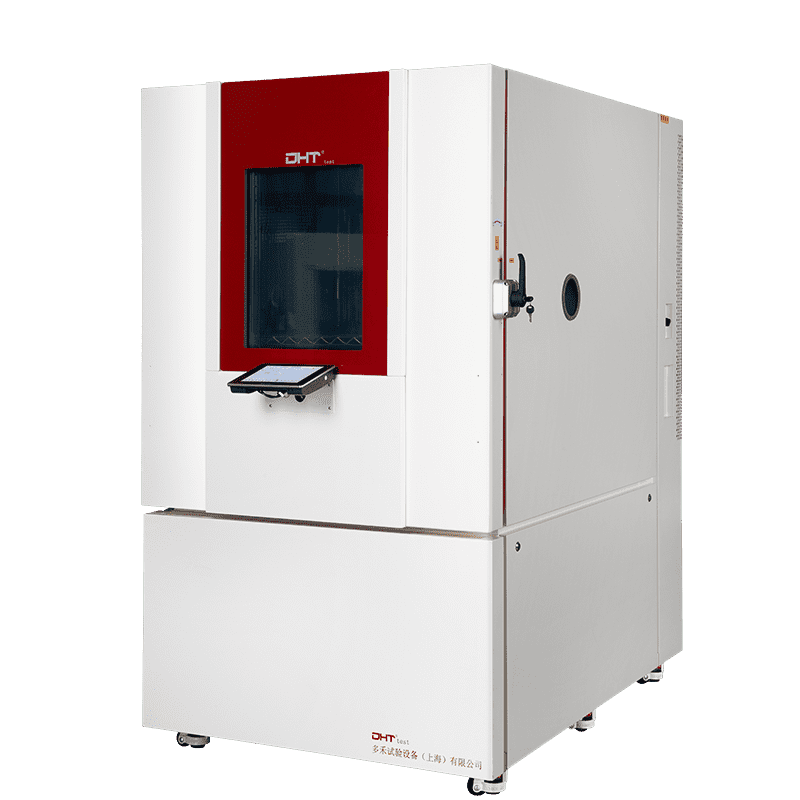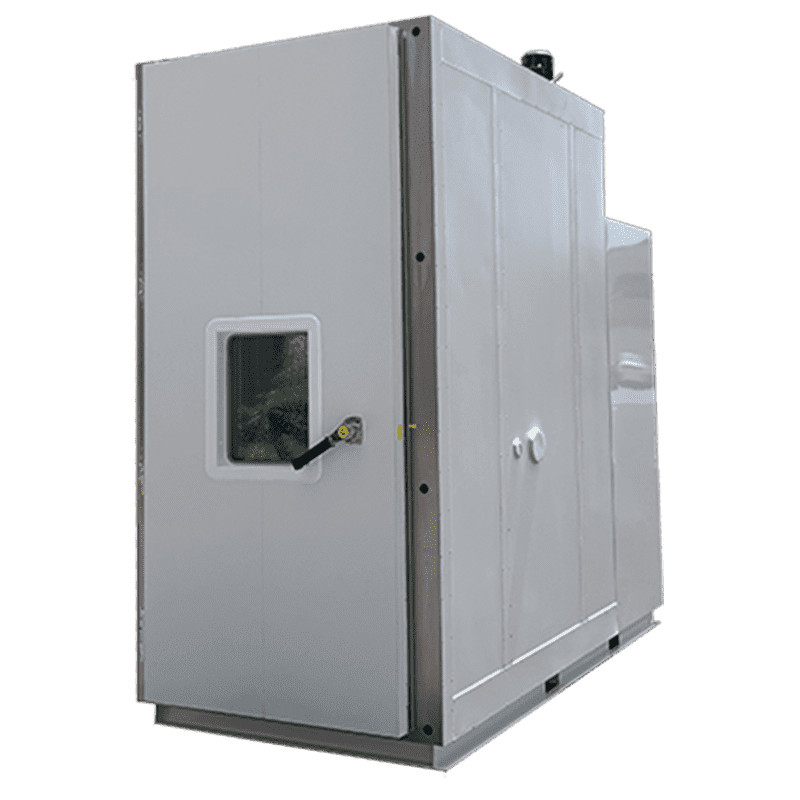What Are Drive-In Test Chambers? — A Solution for System-Level Environmental Simulation
-
Spacious interior: Accommodates whole vehicles, rail transit vehicles, aerospace subsystems, etc., allowing direct entry without disassembly.
-
Multi-stress environment simulation: Capable of simulating temperature cycling, constant temperature and humidity, thermal shock, salt spray, solar radiation, and other compound conditions.
-
High load capacity and flexible integration: Supports payloads of several tons and is compatible with customized modules like rail trolleys, lift platforms, and sliding doors.
-
Engineering customization: Modular design tailored to product size, test conditions, and access requirements.
Why Are Drive-In Test Chambers Essential for Full Vehicle-Level Testing?
Authentic Replication of Vehicle Conditions, Eliminating Disassembly Errors
Coupled Multi-Environmental Stress, Enhancing Test Coverage
Reduced Test Cycles, Improved Validation Efficiency
Typical Application Areas of Drive-In Test Chambers
-
New Energy Vehicles and Battery Systems
-
Full vehicle temperature endurance and weather resistance testing
-
Thermal runaway and cooling system validation of battery packs
-
Cabin comfort and HVAC system condition evaluation
-
-
Aerospace and Military Equipment
-
Avionics system temperature and low-pressure adaptability testing
-
Environmental durability assessment of cargo bays, missile compartments, and vehicle cabins
-
System-level stress evaluation under high-altitude, high-radiation compound environments
-
-
Rail Transit and Heavy Vehicles
-
Vehicle resistance to windblown sand, high humidity and heat, and cold start performance
-
Brake system low-temperature response and mechanical stability analysis
-
-
Special Vehicles and Commercial Equipment
-
Powertrain water ingress, anti-icing, and heat resistance testing
-
Communication and electronic control system interference and sealing performance validation
-
Four Key Factors to Consider When Selecting Drive-In Test Chambers
-
Size and Access Requirements Is the test object a full vehicle? Is rail trolley or lift platform integration needed? Does the chamber opening support vehicle entry? These aspects directly affect structural design and configuration.
-
Intended Environmental Stresses and Functional Requirements Are thermal shock, humidity cycling, or dust testing needed? Are temperature ramp rates and humidity control precision sufficient to meet standards? These functional needs determine core system selection.
-
System Efficiency and Reliability Does the chamber support variable frequency control, energy-saving modes, and self-diagnostics? Can it handle long continuous operation? Stability impacts test control and energy consumption.
-
Manufacturer Customization and Service Capability Drive-in chambers are highly engineered and customizable equipment. The manufacturer’s expertise in structural design, installation experience, and after-sales responsiveness directly influence project success and maintainability.
Industry Trends: Evolving from Equipment Manufacturing to Environmental Capability Platforms
-
Integrated multi-stress simulation platforms: Combining diverse environmental stresses to support complex testing needs.
-
Modular structural design: Facilitating future upgrades and extending equipment lifespan.
-
Smart data acquisition and remote monitoring: Edge computing and industrial IoT improve test visibility and data utilization.
-
Green energy-saving designs: Optimizing power consumption to meet carbon neutrality goals.
Conclusion: Drive-In Test Chambers—The Strategic Cornerstone of High-Reliability Testing
FAQ
What is a drive-in test chamber, and how is it different from standard environmental chambers?
A drive-in test chamber is a large-scale, customizable testing system designed to accommodate full vehicles or large modules without disassembly. Unlike standard chambers, it supports multi-environmental simulations (e.g., temperature, humidity, vibration) at the system level, making it ideal for real-world validation of EVs, aerospace systems, and rail vehicles.
Why are drive-in chambers critical for full vehicle-level testing?
Drive-in chambers eliminate the need for disassembly, ensuring authentic environmental stress replication. They enable simultaneous testing of temperature, humidity, vibration, and other factors, aligning with standards like ISO 16750 and GB/T 28046, which greatly enhances data accuracy and testing efficiency.
What should I consider when choosing a drive-in environmental test chamber?
Key factors include:
Size and access (full vehicle entry, platform integration)
Required stress types (thermal shock, solar radiation, etc.)
Energy efficiency and system stability
Customization capability and after-sales service of the manufacturer


